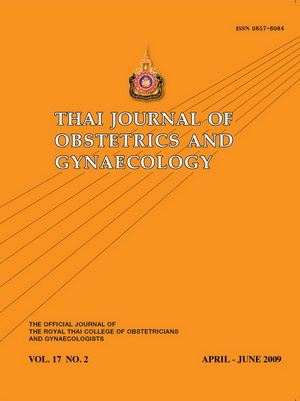Immediate Maternal and Neonatal Outcomes of Forceps and Vacuum-assisted Deliveries at Rajavithi Hospital
Main Article Content
Abstract
Objective: To compare the immediate maternal and neonatal outcomes of forceps and vacuum-assisted deliveries at Rajavithi Hospital.
Material and Method: A historical cohort study was used to analyze the immediate maternal and neonatal outcomes of forceps and vacuum assisted deliveries at Rajavithi Hospital between January 1, 1999 and December 31, 2006. The database of this study contains information of 1,177 mothers. Among 1,177 operative vaginal deliveries, there are 804 cases of forceps extraction and 373 cases of vacuum extraction. Simple random sampling by computer method was used to randomize both groups equally. Maternal outcomes, such as the usage of episiotomy and degree of lacerations, were compared and analyzed. Neonatal outcomes such as Apgar score, neonatal intensive care unit admissions, and cephalhematoma were also analyzed.
Results: The third and fourth degree perineal tear and postpartum hemorrhage were statistically significant more frequent in the forceps extraction than in the vacuum extraction. The cephalhematoma was statistically significant more frequent in the vacuum extraction than in the forceps extraction.
Conclusion: Vacuum extraction causes less maternal perineal tear but increases the risk of neonatal cephalhematoma than forceps extraction.

